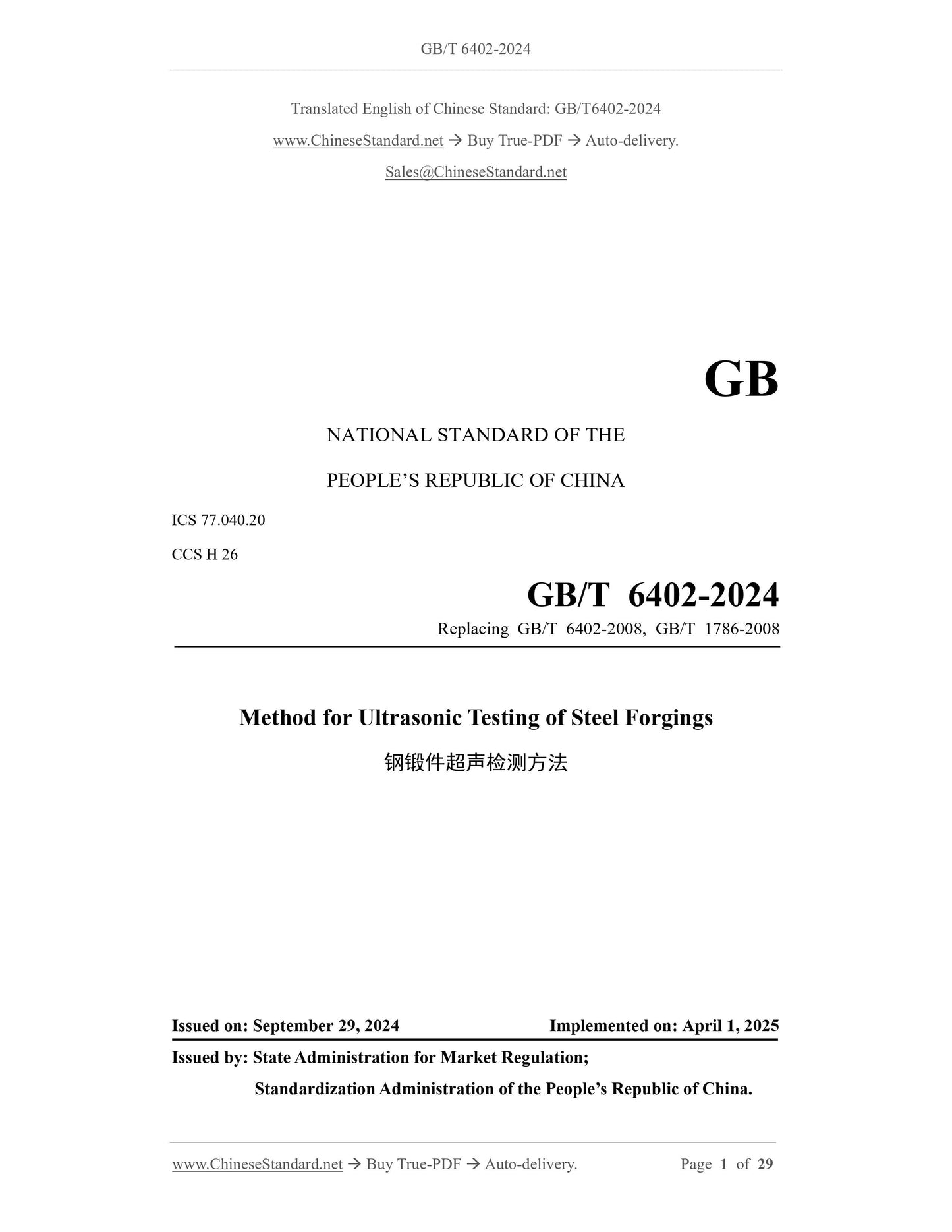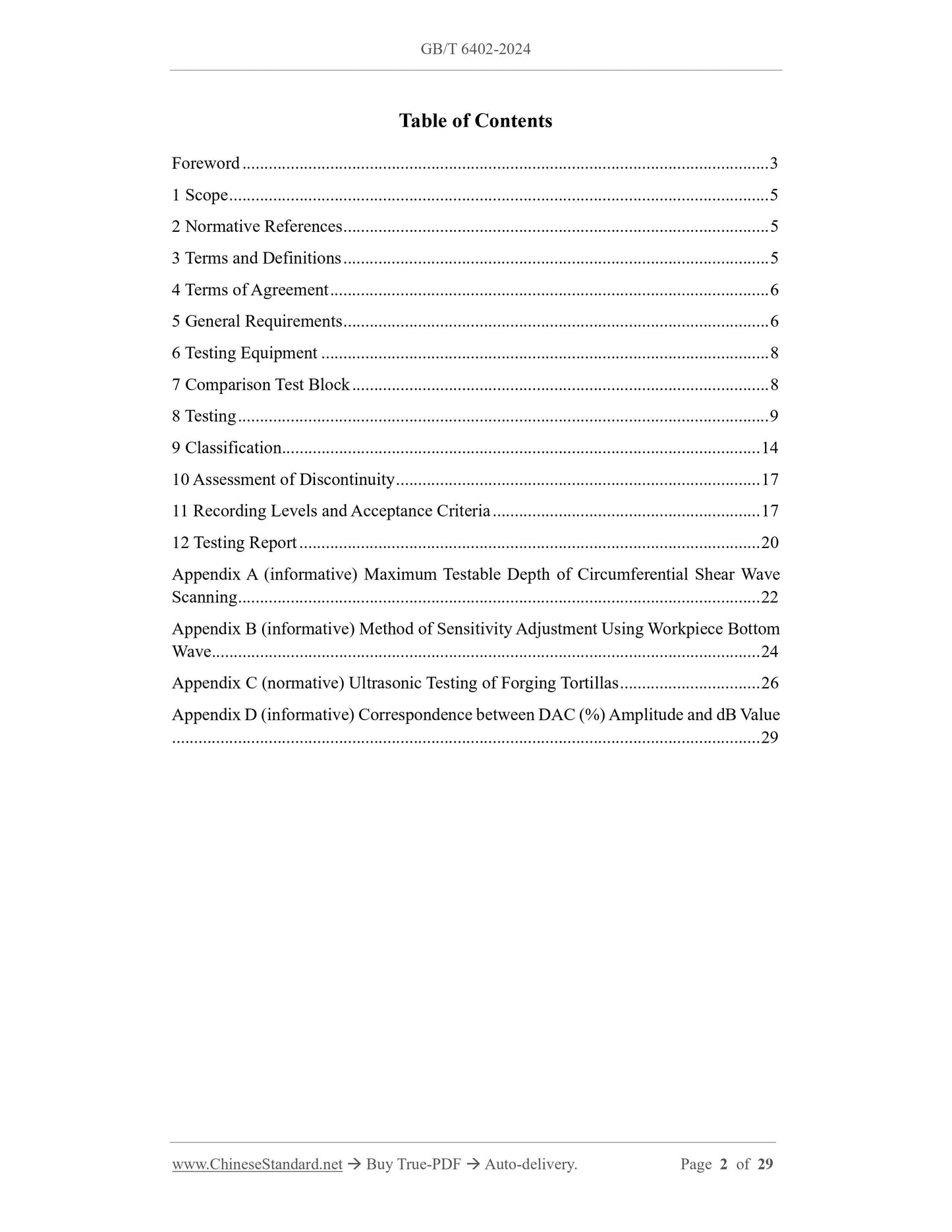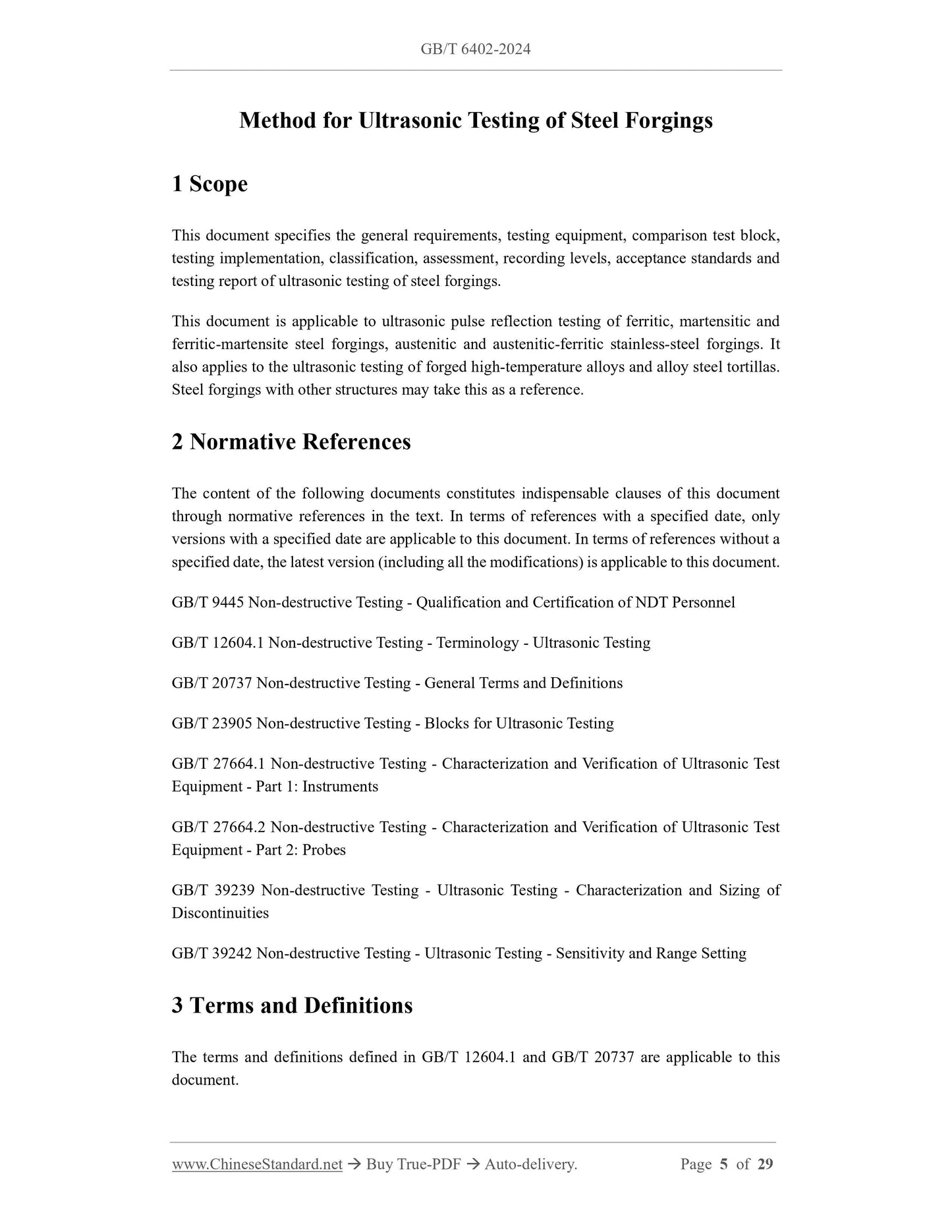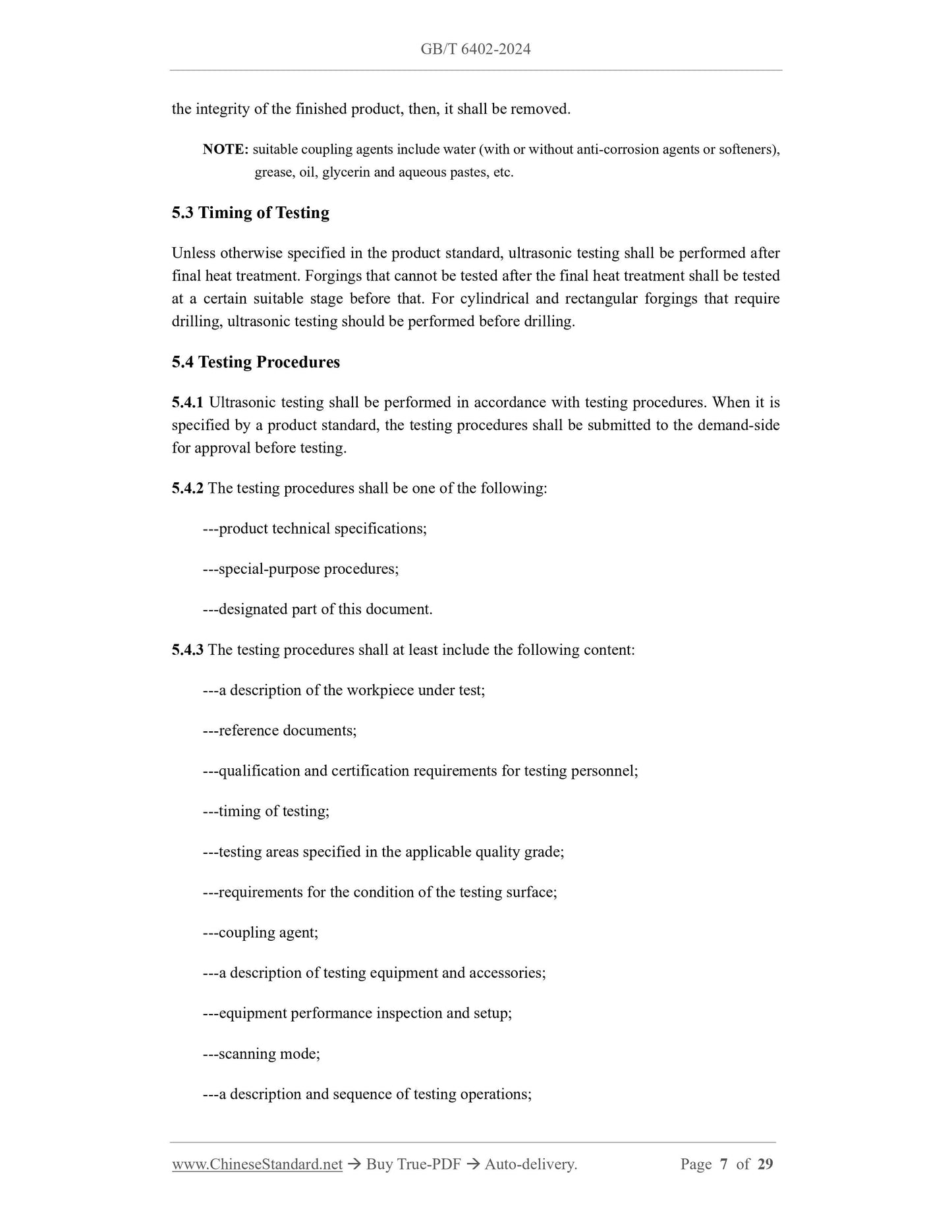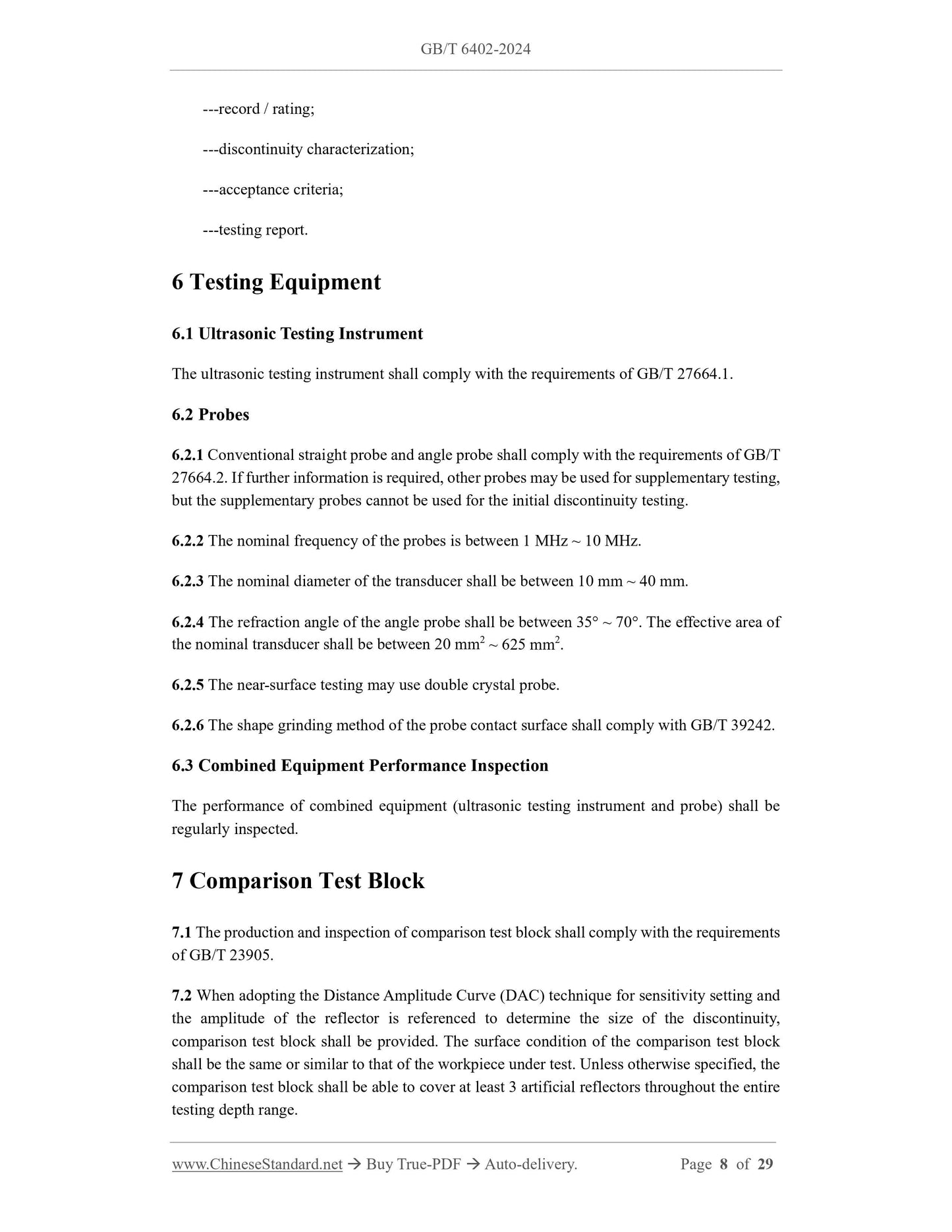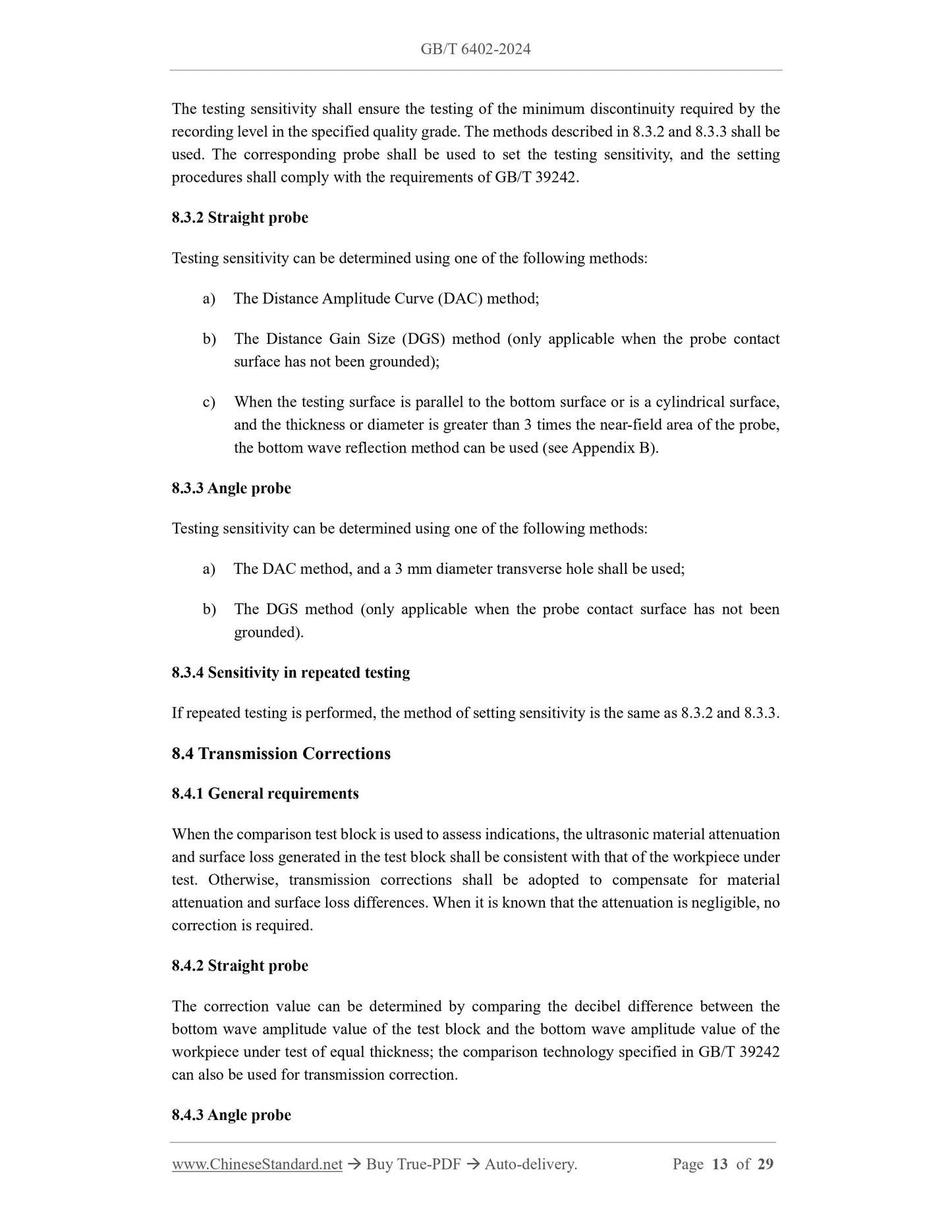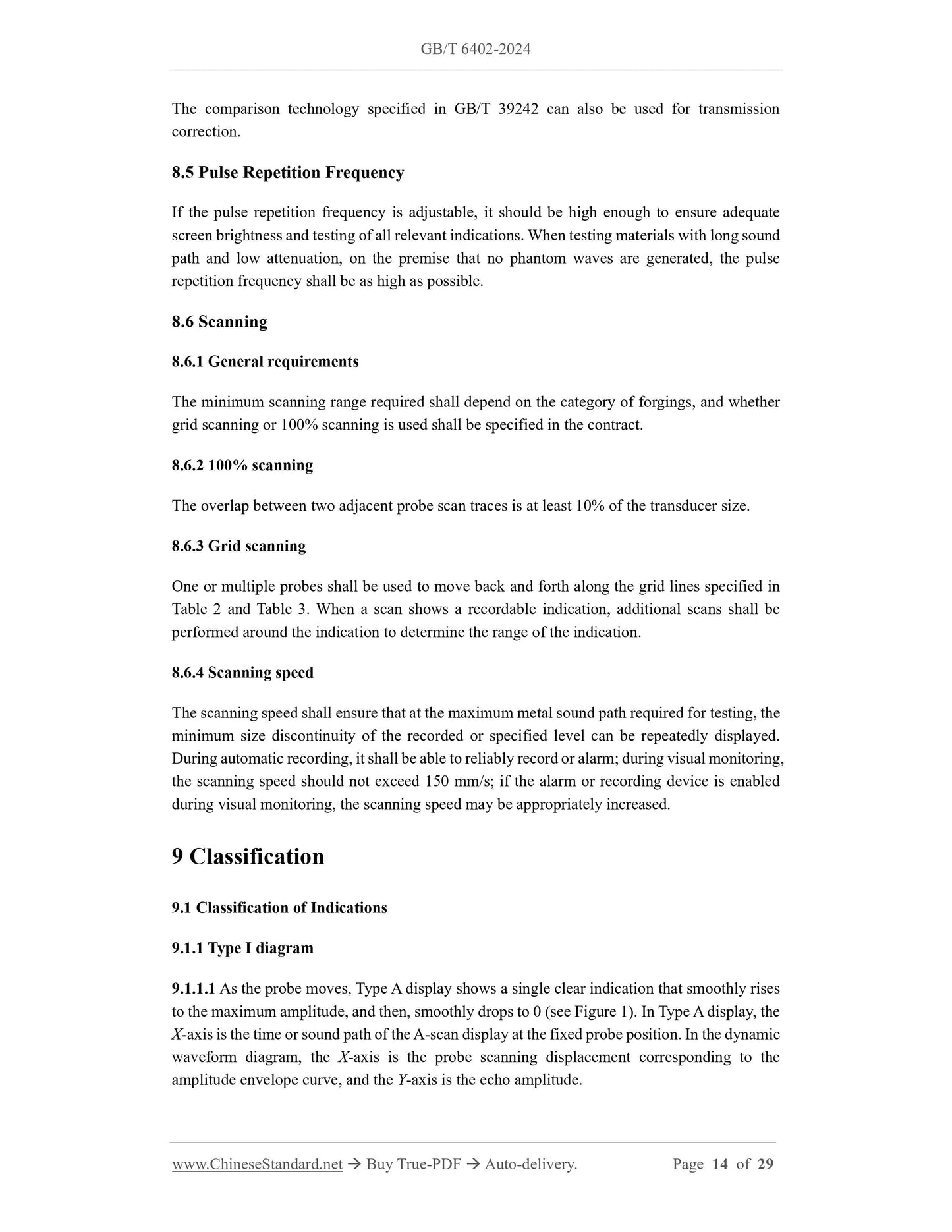1
/
of
7
www.ChineseStandard.us -- Field Test Asia Pte. Ltd.
GB/T 6402-2024 English PDF (GB/T6402-2024)
GB/T 6402-2024 English PDF (GB/T6402-2024)
Regular price
$440.00
Regular price
Sale price
$440.00
Unit price
/
per
Shipping calculated at checkout.
Couldn't load pickup availability
GB/T 6402-2024: Method for ultrasonic testing of steel forgings
Delivery: 9 seconds. Download (and Email) true-PDF + Invoice.Get Quotation: Click GB/T 6402-2024 (Self-service in 1-minute)
Newer / historical versions: GB/T 6402-2024
Preview True-PDF
Scope
This document specifies the general requirements, testing equipment, comparison test block,testing implementation, classification, assessment, recording levels, acceptance standards and
testing report of ultrasonic testing of steel forgings.
This document is applicable to ultrasonic pulse reflection testing of ferritic, martensitic and
ferritic-martensite steel forgings, austenitic and austenitic-ferritic stainless-steel forgings. It
also applies to the ultrasonic testing of forged high-temperature alloys and alloy steel tortillas.
Steel forgings with other structures may take this as a reference.
Basic Data
| Standard ID | GB/T 6402-2024 (GB/T6402-2024) |
| Description (Translated English) | Method for ultrasonic testing of steel forgings |
| Sector / Industry | National Standard (Recommended) |
| Classification of Chinese Standard | H26 |
| Classification of International Standard | 77.040.20 |
| Word Count Estimation | 26,248 |
| Date of Issue | 2024-09-29 |
| Date of Implementation | 2025-04-01 |
| Older Standard (superseded by this standard) | GB/T 1786-2008,GB/T 6402-2008 |
| Issuing agency(ies) | State Administration for Market Regulation, China National Standardization Administration |
Share
